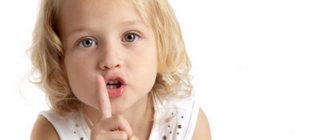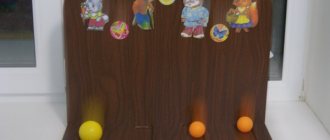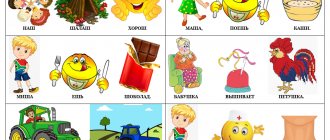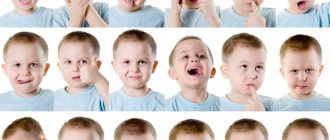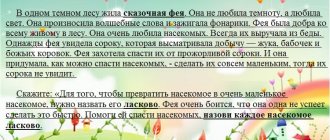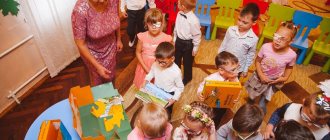Breathing exercises are equally beneficial for children and adults.
But when exercising, it is important to take into account age and select exercises in accordance with the capabilities of the body. So, a two-year-old child, of course, will not be able to cope with the loads provided by a breathing simulator. But this is not necessary, because playing breathing exercises will not only bring no less effect, but will also help develop the speech apparatus and imagination.
Breathing exercises help develop the child’s immature respiratory system and strengthen his immune system. Teaches the baby to breathe correctly and develops the articulatory apparatus. Many exercises from the breathing exercises complex are practiced in speech therapy groups in kindergartens.
Breathing exercises can be a wonderful addition to a variety of therapies - homeopathic, medication or physiotherapy. And the main thing is that thanks to the playful form of classes, the baby does not even notice that he has worked hard and taken a step towards health.
It is enough to devote 10–20 minutes a day to breathing exercises for a two-year-old child. But the result will be tangible. Do not exercise immediately after eating; let at least an hour pass after eating. Classes can be conducted in nature - this is an ideal option. If indoors, be sure to ventilate it so that the air is fresh.
It is important that parents do the exercises with their baby. Name out loud the exercises you will do. As a rule, they have funny names. Or come up with your own funny names for them. Then gymnastics will be more fun.
There are many breathing exercises. You can choose those that you like and that your baby enjoys doing. This should not be a duty, but a game.
Merry little train
Add some action to your exercises. Let the baby walk around the room, pretending to be a train. Alternately moves his arms bent at the elbows and imitates the “puffing” of a train: “Chuh-chukh-chukh.” Stopped - this is the station: the child loudly says: “Too-too!” You can keep moving forward.
It will be much more fun if the “train” is joined by a “car”. The game lasts half a minute.
Exercise "Balloon"
Hand exercises
- Exercise "Bird"
. It must be done for at least thirty to forty seconds. The baby’s task is to pretend that he is a bird and wave his arms at the same time.
- Exercise "Fish"
. Tell your child to put their hands together. He needs to start moving them the way a fish does when it swims. The result should be wave-like movements. You need to do this exercise for at least thirty to forty seconds.
- Let's clap our hands
. During this exercise, the child will need to clap his hands. But this must be done from all sides. Several claps need to be done above your head. A few in front of you. And a few behind you. In addition, the child should clap while changing his body position. For example, sitting on the floor, standing on the sofa, lying on the bed, and so on.
Talker
Talk to your baby a little, ask him simple questions, the answer to which should contain vowel sounds. For example:
- How does the train talk?
- Tu-tu-tu-tu-oo-oo.
– How does the car beep?
- Beep-beep. Beep-beep.
– How does the dough breathe?
- Puff-puff-puff.
You can also sing vowel sounds: o-o-o-o-o; a-a-a-a-a; oo-oo-oo-oo. This exercise can even be done separately from others. For example, during an active walk.
For the first lesson, such a small arsenal of exercises will be enough. Finish the session with calming exercises to restore your child's calm breathing.
Exercise “Funny Train”
Gymnastics and massage for children of the first year of life
Leading an active lifestyle is quite natural for a child.
As a result of this mobility, the development and formation of all its systems and organs occurs, primarily the musculoskeletal, muscular, respiratory, the heart muscle and blood vessels are trained and strengthened. In working mode, the muscle needs 30% more nutrients and 70% more oxygen than at rest; accordingly, during movement, metabolic processes in muscle tissue occur more intensely, which contributes to its growth and strengthening. Due to the constant contraction and relaxation of the muscles, the periosteum, the bone growth zone, at the sites of their attachment, responds to irritation with increased cell division. The result of this process is the strengthening, growth, thickening and strengthening of bones. In addition, during gymnastics, the heart has to process a larger volume of blood, because blood flow increases, which helps train and strengthen the heart muscle and vascular walls. The same thing happens with the lungs. Due to the more intense breathing of children in the first year of life during gymnastics, their volume and the volume of the respiratory surface increase. As is known, in children of the first year of life the mechanism of energy expenditure also works in a special way. Unlike adults, they produce heat in very small quantities at rest, so children outside easily freeze as soon as they stop moving, and quickly begin to sweat if they are active. So, it turns out that in the process of a child’s motor activity, in addition to the musculoskeletal, cardiovascular and respiratory systems, the thermoregulation system is also involved. As you know, all systems and organs in the body are closely interconnected. As the famous physiologist I.M. Sechenov wrote, “the work of the muscles is the work of the brain.” This means that the higher a person’s physical activity, and in our case, the more intense the gymnastics, the more intense the metabolism and blood circulation in his body, and the more adequate nutrition the brain cells receive with blood flow, the more perfect the processes occurring in the brain and the more balanced is the work of the central nervous system controlled by it. Conversely, with low physical activity, there is a delay in the formation of regulation of excitation-inhibition processes. Thus, the consequence of a child’s sedentary lifestyle is that the child becomes more irritable, nervous and gets tired faster; all this does not contribute to proper development. For children of the first year of life, performing gymnastic exercises is not only a very useful activity, but at the same time a pleasant and fun pastime. And since we know that with a positive attitude, a person’s blood vessels dilate and the nutrition of tissues and organs improves, this allows us to draw a conclusion about the benefits of this event. A contrast in its effect on the body of children in the first year of life is a stressful state, when, on the contrary, both large vessels and capillaries are narrowed under the influence of appropriate hormones, and tissue nutrition is correspondingly reduced. A healthy baby is in motion almost all the time he is awake. Moreover, the most interesting types of activity for him are those when he acts in accordance with his own plans, does what he wants, and not what he is forced to do. That is, as they say, “he acts according to the dictates of his heart.” Yes, yes, these are not just words, this is a formulation that has a logical basis. It is the cardiac activity of a positively-minded child of the first year of life, in combination with voluntary ones, performed in accordance with the activity of his own brain, that will give the most complete result in the development of motor activity, strength and dexterity and initiative. It is from this kind of mobility that the child will not get tired for the longest time. To do this, you need to equip the area for gymnastics in such a way that it would be interesting for a child of the first year of life, so that he would want to be there and practice. The design of the gymnastics room, the toys and aids located there, all this should be aimed at attracting the child’s interest. So, we have quite reasonably proven and told that for children of the first year of life, movement and gymnastics are not only and not so much a necessity, as much as they enjoy it. It will no longer be a revelation to anyone that the worst punishment for a child would be to limit his activity, such as being placed against a wall, sitting on a chair while other children run and play, or being left in a corner. We found out which movements (voluntary, of one's own free will) are most preferable for children in the first year of life. It remains to be understood why children need gymnastics? And children of the first year of life need gymnastics so that in their games and other independent activities the child is more dexterous, coordinated and strong. We will not influence the child during the game, directly guiding and teaching him movements while he is absorbed in his activity, but we will do this indirectly, through special sets of gymnastic exercises. Only by the method of repeated repetitions (that is, by the method of performing gymnastic exercises) can one achieve smoothness, clarity and beauty of movements. Only by developing in a child the precision to the point of automaticity in performing basic vital movements and strengthening his muscular frame with gymnastics can we talk about the beauty and harmony of his physique. Centimeters and kilograms are not all important indicators when it comes to a child’s body; proportions also play an important role. Already at a very early age, a child needs to begin to form the most basic stereotypes of movements. One of the first such movements is turning from back to stomach. The child begins to teach this movement at the age of about three months. This skill is needed to prevent various forms of spinal curvature in case of incorrect movement during a rollover. Further, at the age of about six months, the child begins to develop the skill of proper crawling on all fours, so that his arms and legs develop evenly, taking part in this process with equal activity. At the age of about twelve months, the child begins to be taught how to walk correctly, so that his posture is formed correctly, so that the shape of his legs is also correct. If the walking skill is developed correctly, then this can become an excellent form of sports activity for a child already in his adult life. Since for children of the first year of life the most natural reaction to any stimuli coming from the external environment is a general dynamic surge, and not an isolated movement, therefore, in these sets of exercises there are no exercises for mono-movements, that is, movements in one joint. All gymnastics movements must be performed clearly, correctly and accurately, so that in the future these movements will be performed automatically by the child. Only if these conditions are strictly met will the correct formation of the motor pattern occur. Forming correct movement skills without gymnastics is, of course, possible, but it does not always happen. Much more often it doesn't happen. Why guess on your own child whether it will happen or not? With the help of a gymnast for children in the first year of life, the development of agility, strength and endurance will make it easier and simpler for a child to adapt to an older age in a children's team. A coordinated, energetic and dexterous child will always be a much more desirable partner in games and group activities than an incompetent one. This is how motor patterns develop in children in the first year of life. Parents begin to develop them in very early infancy, doing gymnastics and massage with the child, and then the child independently, using sports equipment or exercise machines, or other equipment, will further improve and develop dynamic skills and add to them other, more complex, requiring the presence of basic ones. In order for a child to be interested and want to do gymnastics for children of the first year of life, you need to equip the room accordingly, and also select a set of exercises so that it is neither too long nor too difficult to perform. When choosing, you need to focus on the age and level of general physical fitness of the child. For those children who have a history of congenital pathologies and developmental disorders, it is even more important to engage in physical therapy and therapeutic massage. In this case, massage and gymnastics for children in the first year of life will not be a separate method of influence, they will be present in the complex therapy of the disease. Therefore, before you begin to carry out massage effects, you must obtain a conclusion from your attending physician.
Montessori classes to develop a sense of order for children 2-3 years old
Such exercises help the child understand the principles by which our world exists; mainly here we work on sorting and classification.
Find a pair - Montessori classes for 2-3 years old
The principle of pair selection can be very widely used in working with children:
- Invite your child to sort his own socks and gloves.
- Print out images of animals and offer to compare the picture with existing toy models (the same can be done with your favorite cars, flowers, building models, etc.)
- Offer to find paired cards (colors, images, textures),
- Use special Montessori materials for 2 years and older
Sorting – complicated Montessori games for children from 2 years old
When the baby has mastered pairs, you can move on to a more complex option - sorting.
- Sort cards of different shades by color (you can cut pictures from magazines, scraps, colored cardboard, or you can buy a ready-made Montessori set),
- Remember Cinderella and offer to sort out different types of cereals. First, it is better to take larger grains: beans, chickpeas. Children's breakfast cereals with their cereals, pillows and rings can also be convenient,
- Sort out the box with grandma's buttons by shape, color or number of holes (you definitely have one!)
- Ask your child to put the cutlery in its place,
- Offer to clean up the kitchen and put all the cylinders and balls in one direction, and the cubes and parallelepipeds in the other,
- Rewind the salad: cucumbers to cucumbers, tomatoes to tomatoes, and so on
Establishing Montessori Sequences for a Child 3 Years and Under
- Lay out cards with simple stories and ask your child to remember the correct sequence of events.
- Use Montessori cylinders to help your child master the concepts of less-more and lower-higher,
- Learn simple self-care steps, breaking them down into steps. This way you can learn how to brush your teeth, take a shower, care for animals, and get ready for kindergarten.
Reach out to mom
Benefit: Works the abdominal muscles.
Items: gymnastic stick.
During everyday games, even the most active kids do not always use their abdominal muscles, so it is important to include this element in play gymnastics for kids. The child performs this exercise while lying on his back. If possible, with straightened legs, the baby should reach the gymnastic stick or simply your palm. Initially, do not raise the stick or hand too high from the floor. Focus on the baby's physical capabilities. Raising your legs a little and holding in this position strengthens your abs well.
